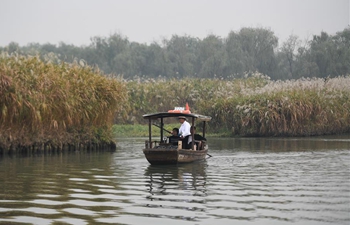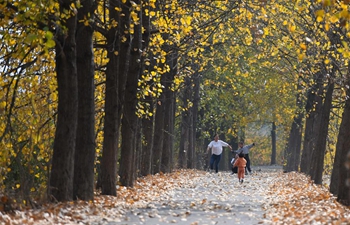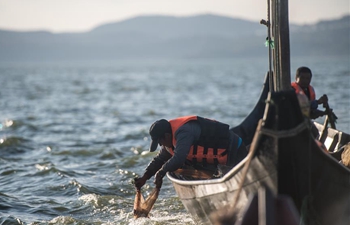SYDNEY, Nov. 4 (Xinhua) -- Scientists believe the critically endangered mountain pygmy-possum, with its numbers dwindling in Australia's Alpine region, could have a better chance at survival if the species were relocated to warmer, lowland rainforests.
Although such a dramatic change in habitat would normally be catastrophic for most animals, research by the University of New South Wales (UNSW) has revealed the mouse-sized creature, also known as Burramys, once thrived at a much lower altitude.
"The fossil record for all other species in the genus Burramys indicates that their current habitat is a far cry from their comfort zone for the last 25 million years," research leader Professor Mike Archer said on Monday.
"All previous populations thrived in cool temperate lowland rainforest communities, not the alpine one."
"What probably happened is that the modern species followed cool rainforest which invaded the alpine areas during a period of relatively warmer, lush conditions. After these conditions deteriorated with further climate change, they were stranded in an environment that was at the extreme end of their adaptability."
Hibernating under snow cover, deep within humid rock piles during winter months, mountain pygmy-possums are particularly susceptible to the effects of climate change.
Now with just 2,500 left in the wild, researchers fear continued declines in snowfall may spell the end of the nocturnal marsupial.
"To hibernate successfully, they need temperatures to hover between 1.5 and 2.5 degrees Celsius," co-author Dr. Hayley Bates from UNSW's School of Biological, Earth and Environmental Sciences explained.
In a last ditch effort to save the species, Archer and his team from UNSW, along with other partners from the University of Sydney, University of New England and various local and international environmental organizations, have joined forces to set up a breeding colony in a dense lowland forest.
Currently with two breeding pairs at enclosures in the Secret Creek Sanctuary in Lithgow, around 140 km west of Sydney, researchers are using closed-circuit cameras to monitor the progress of the Burramys.













